In this post we are sharing the top 100 gadgets that had a major impact on the world. Creating a gadget from scratch with the sole intention of overcoming the difficulties of everyday life is no small undertaking. Thankfully, you don’t have to be a pioneer of something to make the biggest impact. It is perfectly fine to develop an idea proposed by someone else, build a device based on an existing gadget, or modify a particular tool to improve its usefulness, practicality, and implementation. Although many of the following gadgets are not the first of their kind, their popularity makes it difficult to overestimate their importance in shaping the world as we know it.
Top 100 gadgets that changed the world
1. Apple iPhone (2007)
When the original iPhone became available in 2007, smartphones had been in existence for years; a lot of features in the device were not new. It came with Internet capabilities, an audio player, camera, touchscreen, and a built-in storage drive. That being said, the iPhone set the course for major developments in handheld communication devices. Market competition among Apple and other manufacturers changed the landscape of the industry in an unprecedented way. The iPhone drove the creation of millions of applications and brought smartphones to the vast majority of people around the world.
2. Sony Trinitron TV (1968)
Television has always been an important part of society, and among all early televisions, one of the most memorable is the Sony Trinitron, launched in 1968 as a color TV. It was the first of its kind and Sony won an Emmy for the Trinitron. Over the next 25 years, around 100 million units were sold.
3. Apple Macintosh
Few will argue that Apple currently stands as one of the most influential companies in the world. While the company’s early days were not always a walk in the park, it did produce an iconic device worth remembering: the Macintosh computer. With its graphical user interface (GUI), Apple Macintosh was an instant hit. In fact, it was Apple’s best weapon to compete with IBM. The Macintosh’s easier user interface gave us an excellent example of how people should use and interact with a computer.
4. Victrola Record Player (1920s)
Manufactured by the Victor Talking Machine Company, the Victrola was essentially a phonograph with an internal horn machine (the amplifying horn was hidden inside a wooden cabinet) which gave it a sophisticated fancy look. The original Victrola Record Player hit the market in September 1906, nearly three decades after Thomas Edison introduced it to a crowd in the office of the Scientific American. Because the design of the Victrola made the audio player look more like regular furniture than a piece of machinery, it was an instant success for the company. A great number of units were sold by the end of the 1920s. RCA (Radio Corporation of America) later purchased the Victor Talking Machine Company and continued to market record players under the Victrola brand until the late 1960s.
5. Sony Walkman
Originally known as the “Sound About” in the United States, Sony Walkman led the way for portable music. It played cassettes, allowing it to be small enough to fit in a pocket or purse. It ran on AA batteries, so users could easily replace them anytime, anywhere. Around 200 million units had been sold before Sony decided to discontinue the product after a considerable decline in popularity, mainly due to the CD player.
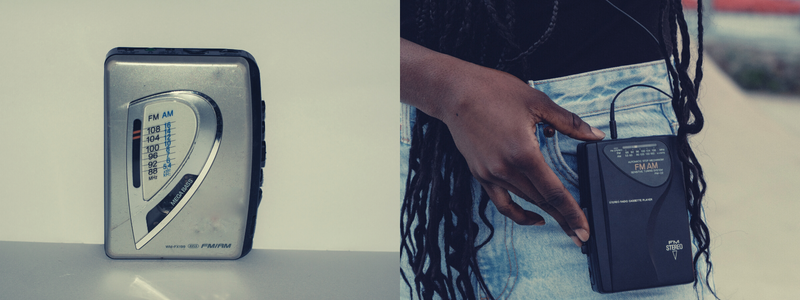
6. IBM Model 5150
The world became acquainted with the personal computer before the IBM Model 5150 was even born. However, Big Blue’s decision to let Microsoft handle the operating system of the computer encouraged the advent of something called IBM Compatibles. While sometimes referred to as IBM clones, they became the forerunner of nearly all non-Apple PCs you can find everywhere today.
7. Regency TR-1 Transistor Radio (1954)
Texas Instruments and Industrial Development Engineering Associates collaborated to develop a gadget based on the technology invented by Bell Labs. This undertaking brought the Regency TR-1 Transistor Radio into the world. It was the first portable battery-powered pocket radio to be equipped with transistors. Before its launch in November 1954, transistors had been used exclusively for military purposes. Within only one year of release, around 100,000 units were sold. The project was then abandoned due to the low-profit margin.
8. Kodak Brownie Camera (1900)
When the Kodak Brownie Camera became available for the first time in February 1900, a kid could purchase it for just one dollar (the equivalent of roughly $20 in today’s money). It was marketed towards children, but the low asking price was just a strategy for Kodak to make more money through the sale of film. Price point and marketing tactics aside, the small cardboard camera popularized photography without the need for a tripod.
9. Magic Wand (1968)
Originally intended as a massager but popularized as a sex toy, the Magic Wand has been in business since 1968. After an episode of Sex and the City revealed its alternate function, Hitachi – the manufacturer – dropped its brand from the name of the device without actually ceasing production. In fact, it’s the most popular product from a Japanese company in the United States. Nobody knows for sure whether Hitachi realized the potential of its Magic Wand as a masturbation aid, but the product has enjoyed great commercial success.
In addition to the aforementioned scene from the popular TV series, the immense popularity of the Magic Wand as a vibrator is also associated with Betty Dodson, an American sex educator who used the device for demonstrations in her instructional classes on self-pleasure techniques. The Magic Wand looks more like a microphone than anything else; it has the wand (the plastic shaft) and a vibrating rounded head.
10. Apple iPod (2001)
Portable music players had been around before the iPod came out, but nothing was more persuasive than Apple’s megahit that convinced people to upgrade their old-fashioned (and in most cases, fully functional) CD players. The notion of having hundreds of songs in a single device without having to switch CDs or even cassettes sounds nothing but normal now, but the world changed overnight when the iPod was launched in October 2001. The original first-generation iPod came with 5GB of storage and a battery that could run for about 10 hours.
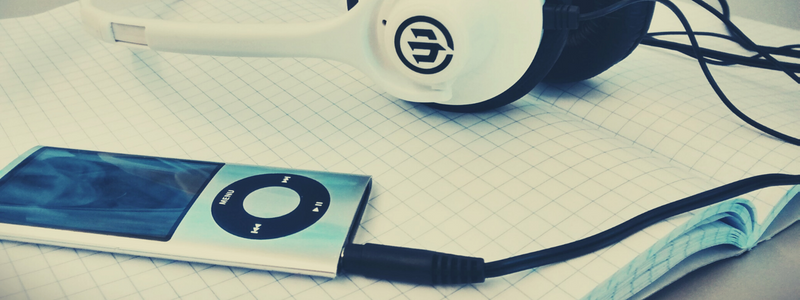
11. Canon Pocketronic Calculator (1970)
If you make the effort to trace back the development of portable gadgets – especially in the design department – a lot of different things appeared to be the base model of today’s smartphones. For example, the Canon Pocketronic Calculator was made available for the first time in 1970. It had several circuits to add, multiply, subtract, and divide before printing the calculated result on a piece of thermal paper. Thirteen battery cells powered the calculator, but they were rechargeable.
All of those could be purchased for a modest $345, or around $2,160 of today’s money. Circuitry became vastly miniaturized soon after the Pocketronic was launched and prices for electronics were reduced afterward. Within just several years, anyone could purchase a similar calculator for 90 percent less than what Pocketronic originally cost.
12. Philips N1500 VCR (1972)
One of the first successful VCR (videocassette recorder) models was the N1500 made by Philips, which was launched in 1972. Coming before the age of VHS and Betamax, it allowed TV watchers to record their favorite programs to watch later. The N1500 had a timer and tuner, so it did come at a reasonably high price of more than $1,000 at launch.
RELATED: Check out these awesome winning contests on Cad Crowd!
13. Atari 2600 (1977)
Although the Atari 2600 sold only in small numbers after launching in 1977, several games that followed a few years later helped boost its sales. Pac-Man and Space Invaders became the undisputed saviors, allowing Atari to collect fortunes from millions of gamers. The graphics quality was as expected, in the sense that it would not produce the same kind of lavish illustrations displayed in the merchandise; it was 8-bit, yet it didn’t stop Atari from becoming the video game giant of the time. The console, which also included the iconic joystick, brought a fun time to the masses.
14. US Robotics Sportster 56K Modem
Thanks to the US Robotics Sportster 56K Modem, many families in the United States had the chance to enjoy the early days of the Internet in a convenient way. Those were the days before broadband connection, so dial-up modems were quite popular. Peak usage happened in 2001, as much more reliable and faster means to reach the Internet arrived. Unfortunately, millions of households in the United States (and many other countries for that matter) still use dial-up.
15. Nintendo Entertainment System (1983)
Originally released in Japan as a Family Computer in 1983, the Nintendo Entertainment System (most often referred to simply as NES) arrived in New York two years after its initial launch in its home country. It came to the gaming scene just after severe losses had stricken a lot of console makers. NES was a sensation; it is safe to say that NES was to the gaming industry what Nokia was to mobile phones.
While there were still competitors, the NES pretty much reintroduced gaming to the world. Featuring front-loaded game cartridges and hardwired controllers, this design approach became the base model for nearly all next-generation game consoles. Nintendo was so dominant that anytime somebody talked about video games, Nintendo was the only relevant brand. This was the case for quite a while. And of course, everybody knows Mario.
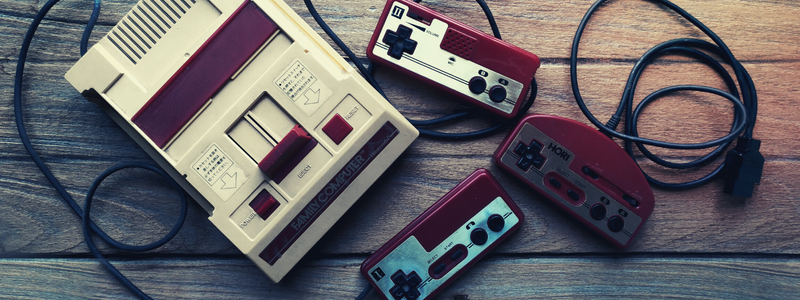
16. Nintendo Game Boy (1989)
Despite persistent competition in the market with reputable brands such as Sega’s Game Gear and Atari’s Lynx, the Nintendo Game Boy outsold them by a large margin. Game Gear and Lynx sold about 14 million units combined, while the Game Boy series of devices sold more than 118 million units worldwide. Although it isn’t really a fair comparison since Nintendo continued revising the original Game Boy until 2003. From 1989 to 2003, there were five models including the original, Play It Loud, Pocket, Light, and Color. The most popular game was Tetris. As anemic as the whole design and interface might seem, the portable gaming console turned out to be very influential.
17. IBM Selectric Typewriter (1961)
Unlike a mechanical typewriter, the IBM Selectric did not have individual typebars and a metal lever to advance the paper. Instead, it featured a typing element shaped like R2D2’s head, which some people call the golf ball. It was an interchangeable component that allowed the typewriter to print different fonts. This was not the first electric typewriter, but it was the first to gain commercial success. In fact, Selectric dominated the market for about two decades following its release in 1961. One of the major improvements was the magnetic tape model in 1964, allowing the typewriter to store data. When the IBM System/360 appeared four years later, the same keyboard served as the primary input device for the mainframe computer.
18. BlackBerry 850 Wireless Handheld (1999)
In 1999, BlackBerry emerged onto the market with the BlackBerry 850 Wireless Handheld. It was the first device to carry the BlackBerry name. With a monochrome screen, email functions, and limited Internet browsing capabilities, the device was far from desirable by today’s standards. Research in Motion (RIM, later renamed BlackBerry), the company that made it, did not invent the email, wireless data network, handheld form factor, or even the Qwerty keyboard layout.
However, the combination of all those technologies cramped inside a small device that actually worked was the first of its kind. Let us not forget that RIM also set the email server for users, so any incoming message could appear without requiring any action on the user’s part. Suddenly, email and the Internet were no longer privileges invented for executives, but also for employees and their children.
19. Motorola Bravo Pager (1986)
In the days before the mobile phone became a ubiquity, people did their long-distance communication using a beeper or pager. Early pagers could only send and retrieve code messages such as 911 or another set of agreed-upon codes users were aware of. Once sent and received, the recipient called the sender to talk using a different device. Motorola changed that paradigm in 1986 with the introduction of the Bravo Pager, which could store up to five messages as long as each did not exceed 24 characters. It was one of the best-selling pagers and the earliest taste of true mobile communication. It took several years after its release date for the device to become a prestigious status symbol.
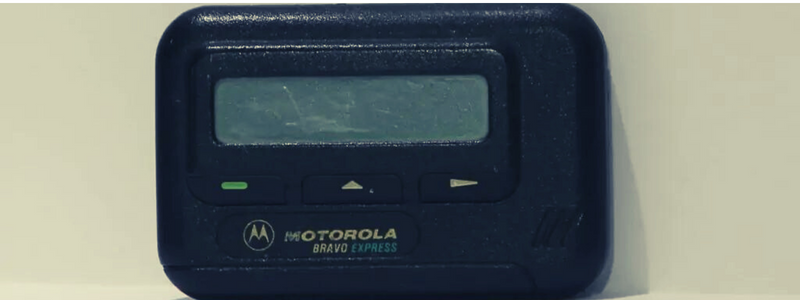
20. Texas Instruments SR-10 (1972)
Debuted in 1972 and available for $150, the Texas Instruments SR-10 brought a sudden improvement to the atmosphere of math classes all around the world. While the calculator came at a fairly steep price ($810 in current dollars), it was the first affordable handheld scientific calculator with functions to cater to avid mathematicians. It calculated square roots, reciprocals, and many other slide-rule functions. Just two years later, the Texas Instruments SR-50 appeared, featuring additional functions such as trigonometric calculations.
21. JVC VideoMovie Camcorder (1984)
When Marty McFly carried it around in Back to the Future, the JVC VideoMovie Recorder became even more popular than it already had been. Released in 1984, the recorder was the first to integrate a tape deck, so the user did not have to house the cassette in a separate peripheral. It was not the first of its kind, but the VideoMovie was arguably the most iconic – partly due to its appearance in the popular movie – of all time. Throughout its production run until 2006, the device did its part to change the world by allowing everyone to immortalize memories in a much easier way.
22. Motorola Droid (2009)
Neither the first nor the best Android-powered phone, the original Motorola Droid was one of few devices popular enough to introduce the powerful operating system to the public. Released in 2009, two years after the iPhone was launched, the Droid only further established the competition between Google’s Android and Apple’s iOS. Although Verizon and Motorola did not disclose sales figures for the device, their $100 million investment into marketing paid off. Within roughly a month of release, more than 700,000 Droids were sold.
23. IBM ThinkPad 700C (2005)
Apple and Compaq were the dominating forces in the laptop industry during the early 1990s. IBM, with its ThinkPad line of laptops (the brand “ThinkPad” was first developed by IBM until 2005 and later by Lenovo), challenged the domination quite well. One of the first in the series was the 700C featuring a 10.4-inch color touchscreen and a TrackPoint navigation device that allowed users to use the laptop without an external pointing device. It also had one of the most powerful processors at the time. ThinkPad remains in production now, and there are many dozens of different configurations available. Many design aspects of the first one, however, remain relevant more than 25 years later.
24. TomTom GPS (2000)
Just like several other great technologies (Internet, Drones, and Transistors to name a few), GPS was first developed and used for military purposes before the government allowed it for public use. In the case of GPS, President Bill Clinton decided to open the network for commercial application in 2000, fulfilling a promise made by Ronald Reagan. TomTom was one of the first to introduce GPS devices for car navigation, but Garmin is seemingly at the top of the market right now. As technology improves, GPS functionality can now be found even in the cheapest smartphone today.
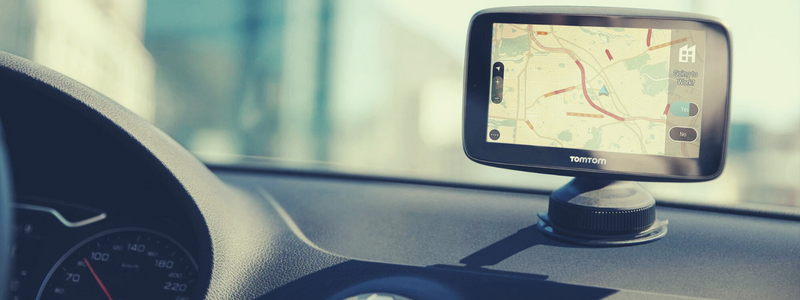
25. PhoneMate 400 Answering Machine (1971)
Equipped with an earphone port and memory capacity to store about 20 messages, the PhoneMate Model 400 was a glimpse into the future, at least in 1971. Those were the days when an answering machine was considered a business device and most commonly seen in an office setting. The idea of having such sophistication at home had been overreaching until the 10-pound PhoneMate 400 came along.
26. BlackBerry 6210 (2003)
Research in Motion made another breakthrough with the BlackBerry 6210 (sometimes also referred to as the Quark) released officially in 2003. Despite many new models throughout the company’s existence, the Quark remains a popular and iconic BlackBerry device. Believe it or not, one of the biggest improvements from the previous model was that it allowed users to make phone calls without attaching a headset. It could also check emails, manage calendars, send SMS, and browse the Internet. The BlackBerry Quark brought USB support and a 34-key QWERTY keyboard. All in all, the 6210s overall design and specification were pivotal in mobile communication development.
27. Motorola PageWriter (1998)
Unlike early Motorola’s pager, which was only able to send numerical codes, the PageWriter (also from Motorola) was a much more serious device as it actually had the capability of sending and receiving texts over a wireless network. It came in a flip-top design, which when opened revealed a QWERTY keyboard and four-color grayscale screen. It was released in 1998 before the vast majority of the population knew what SMS actually was (the first SMS was sent in late 1992 – at that time wireless networks were still scarce, and most phones were not designed for typing texts). The PageWriter was far ahead of its time, and it gave early adopters something great to brag about.
28. Apple iPad (2010)
Launched in 2010, Steve Jobs said that it was phenomenal to be able to hold the Internet in your hands (or something like that) when he introduced the original Apple iPad. While this is not the first electronic tablet, it seems like the iPod created a new product category in the consumer electronics market. Unlike previous tablets such as the Palm Pilot and GriDPad, which had smaller screens and stylus-bound operations, Apple created something more beautiful with a 9.7-inch real touchscreen. Around 300,000 iPad units were sold on its first day in stores.
One could almost say that Steve Jobs made a serious bet creating a new product category, but the rest of the world believed he knew all along that it was going to be a major success. Not only did the iPad bring Apple ahead of all competitors, but it also set a new trend in the mobile computing industry; large touchscreen, no keypad, and app-oriented.
29. Commodore 64 (1982)
The best-selling single computer model of all time is the Commodore 64, selling more than 12.5 million units from August 1982 to April 1994. The entire system was housed in a keyboard-shaped device and had to be connected to a TV through a switch box or RCA converter. It was compact, relatively easy to use, and attractive to say the least. It popularized the idea of having a computer at home, and the personal computer has become a necessity since then.
30. Polaroid Camera (1977)
Baby Boomers like to say that millennials spend too much time taking selfies, but they did the same thing when they were teenagers. When the Polaroid OneStep Land camera hit store shelves in 1977, it became one of the hottest-selling commodities all across the country. Photographs captured using that Polaroid camera dominated American family albums in the 1980s. The square-framed photos, which more often than not had a poor composition and bad color balance, are once again being celebrated by an entirely different generation.
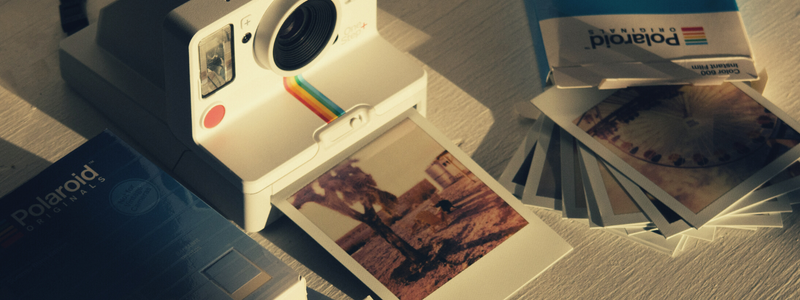
31. Amazon Kindle
It is only natural for an online bookstore to also offer devices that help people read books. Not only does Amazon offer reading glasses, writing tools, desks, and lamps, but it also sells something called the Kindle to read and store digital books. Not only does the online store sell the Kindle, it also designs the device. Amazon and its Kindle changed the way people access, purchase, and read books.
Users no longer have to pick up a book from a large cabinet as the device stores hundreds of titles in its internal storage. Memory slot expansion is also available in case you need to store millions of books. Equipped with Internet connectivity, browsing books in the Amazon store is a breeze. Many models are available now, but the original non-color screen Kindle will always be a milestone that marked Amazon’s transformation from a small online store into a digital media power to be reckoned with.
32. TiVo (1999)
Announced in 1999, the TiVo was supposed to be the next step in VCR technology, and it turned out to be just that. A major improvement over previous models was the digital interface that allowed users to navigate settings through a simple menu layout. It eliminated the need for rather confusing VCR settings to execute simple commands such as pause and rewind live broadcasts. TiVo is the forerunner of modern DVR devices; to put it in simple words, it popularized the idea of watching TV without commercials and playing any show when it fits the user’s schedule.
33. Raspberry Pi
Coming at a low price tag of around $35 or less, the Raspberry Pi is an excellent, albeit slower, an alternative to a laptop or desktop PC. It comes as a single-board computer without a screen, keyboard, and mouse. It is designed primarily to help students learn basic programming and the device does the job quite well. More than 19 million units have been sold so far.
34. Apple Newton MessagePad (1993)
Developed by Apple Computer for the Newton Platform in 1993, the MessagePad weighed around one pound and was available for roughly $700. It was big, pricey, cumbersome, and imperfect, but it became the model based on which other manufacturers made improvements. More user-friendly devices such as the PalmPilot and even the iPod brought more or less the same form factor. Despite its expensive price tag, the cool aspect of it still appealed to a lot of people, especially at a time when there was no affordable gadget available. Apple did play its part in the joint venture, although some manufacturing and electronic engineering were done by Sharp Corporation in Japan.
35. Toshiba DVD Player (1996)
Many consumer electronics manufacturers were still trying to develop the right formula for standalone optical media storage during the early 1990s, and Toshiba became the first in the race with the release of the SD-3000 DVD player in late 1996. Soon after that, magnetic tape was rendered obsolete, as was the recurrent tangling issue. DVD players made it easier for anybody to watch high-quality videos from a small 12-inch diameter disc. Today, it remains the standard size for similar technologies such as Blu-ray.
36. Sony PlayStation (1994)
Sony was obsessed with transforming an otherwise sophisticated assortment of gaming technologies into a smaller, more familiar user-friendly form factor anybody could use. In 1994, Sony introduced the groundbreaking PlayStation game console and today it remains one of the most popular platforms for both gamers and game developers. Since its introduction, PlayStation has reigned supreme in the gaming market, and the success continued with PlayStation 2 – the best-selling game console of all time.
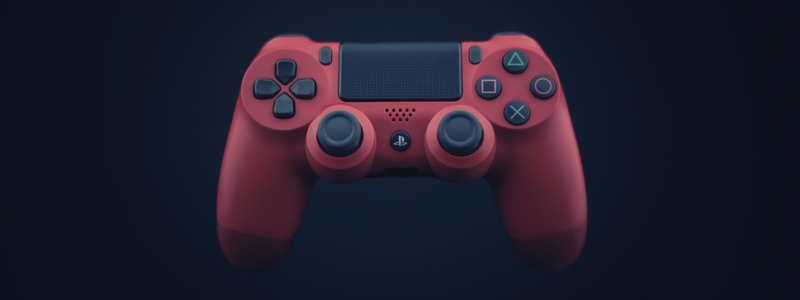
37. Nintendo Wii
The seventh-generation game console from Nintendo helped the company regain its reputation as a pioneer in the gaming industry. The Nintendo Wii competed directly with the PlayStation 3 and Microsoft’s Xbox 360. With more than 100 million units sold worldwide (as of March 2016), it actually surpassed the sales of its competitors. The best thing about the Wii is how interactive it is, as the controller is motion-based.
RELATED: Cad Crowd offers invention help to entrepreneurs and companies
Jerrold Cable Box (1950)
Founded in 1950 by Milton Jerrold Shapp, who later become the Governor of Pennsylvania (1971–1979), Jerrold Cable Box made one of the earliest cable boxes known as the Jerrold Cable Box. It had wood panels and sliders to choose the channel. Its rudimentary design inspired others to come up with different approaches and improve all its imperfections.
39. Oculus Rift (2016)
Launched in 2016, it seems like everybody talked about how great the Oculus Rift was. Beginning as a Kickstarter project in 2012, the venture then turned into a $2 billion enterprise thanks to Meta’s ambitious takeover just two years later. Virtual reality was all over the news. As the parent company, Meta also enjoyed a boost in reputation.
Within about a year following the release of the device, however, it was announced that the actual founder and creator of Oculus VR, Palmer Luckey, was leaving Facebook. Other companies finally caught up with the technology and price wars began. The Oculus Rift deserves a place on this list for making great contributions to the development of virtual reality as a whole. It also encouraged people to take a journey to the center of many imaginary places simply by sitting down and strapping a pair of weird-looking goggles around the head.
40. Nokia 3210 (1999)
Long battery life and clear reception are the two most important features anybody would want from a mobile phone, and the Nokia 3210 gave them all. Released in 1999, Nokia sold more than 160 million units of 3210 throughout its production run. In fact, Nokia 3210 is one of the most popular and successful mobile phones in history. It did more than just introduce the technology to the world –it also marked an important development with its internal antenna and preloaded game. With customizable ringtones and changeable covers, the mobile phone was praised.
41. HP DeskJet (1988)
Although not the first inkjet printer when introduced in 1988, the original HP DeskJet was the model many home users actually bought. Available for $995 (more than $2,000 today), it had a built-in sheet feeder and printing speed of a blazing two pages per minute. The DeskJet product line is still in production now, and HP has sold more than 240 million units so far.
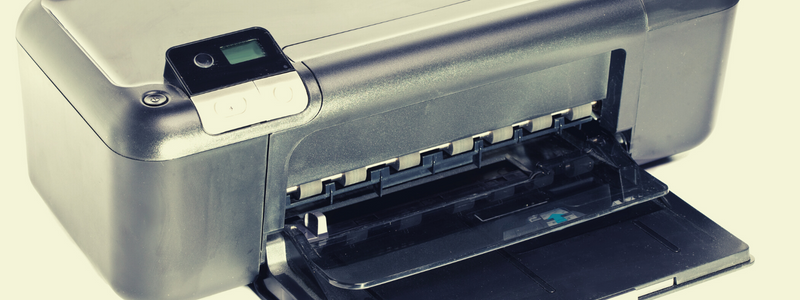
42. PalmPilot (1997)
Handheld computing was not really a thing until the PalmPilot appeared in 1997. It offered handwriting recognition as well as synchronization with user’s calendar entries and contacts. Just like what the iPad did to the tablet market, PalmPilot created a new consumer electronics product category which later became known as “personal digital assistant” or PDA. Just like the HP DeskJet in the printing market, PalmPilot was not the first but it was the first people actually wanted and bought. The form factor paved the way for the design aspect of BlackBerry and even modern smartphones.
43. Sony Discman D-50
A year after Sony had adopted the CD format, it unveiled the next iteration of the widely popular Walkman, only this time the device was called a Discman and it played CDs instead of cassette tapes, just as expected. It probably seemed like the Discman (later renamed CD Walkman) did nothing more than just capitalize on the portable audio player industry for Sony, but in reality, the device played a major role in encouraging consumers at large to switch from cassette format to the better-quality CD. Suddenly, a new market for portable CD players was created and prices inevitably dropped. For those who followed suit by adopting the same format, they enjoyed sudden growth as well.
44. Osborne 1
When it comes to the portable computer, the first thing that comes to mind is a laptop. Keep in mind that the tech industry has different definitions of portable and mobile. Take the Osborne 1 for example – this was the first commercially successful “portable” computer despite the obvious limitation that users needed to plug it in directly to a power outlet to turn the device on. It still made it into the portable category because users could carry it when not in use, although it would be tough since Osborne 1 weighed around 25 pounds. The machine had a five-inch monochrome screen, so no bigger than last year’s entry-level smartphone.
45. Motorola DynaTAC 8000x (1984)
Various tech companies can claim that they were the first to do many things or introduce certain features in their products, but the first commercially available true portable phone will always be the DynaTAC 8000x made by Motorola which launched in 1984. Martin Cooper, one of the designers, made the first public demonstration using a prototype DynaTAC around a decade earlier. The final product would cost $4,000 and it weighed roughly two pounds.
46. Apple iBook
The intention of Apple’s iBook line was to provide lower-end computers. The former came in multiple color schemes and had a much less dull form factor. With rounded corners and a handbag-like appearance, it was an obvious reference to the iMac. Apart from the bold design approach, the iBook marked a much more important development in computing technology. It was the first mass consumer product to offer Wi-Fi connectivity. Apple branded it the AirPort.
47. Roku Netflix Player (2010)
Many people were caught off guard by the Roku, a small video streaming box that played Netflix and some other apps. Released in 2010, Roku started the wave of people moving from cable TV to wireless home entertainment. Apple TV proceeded Roku by about three years, but Apple did not offer the same number of channels or content as Roku did. The remote control for the Roku was not as capable as consumers wanted it to be, but the device itself housed a Linux operating system, which people were happy about.
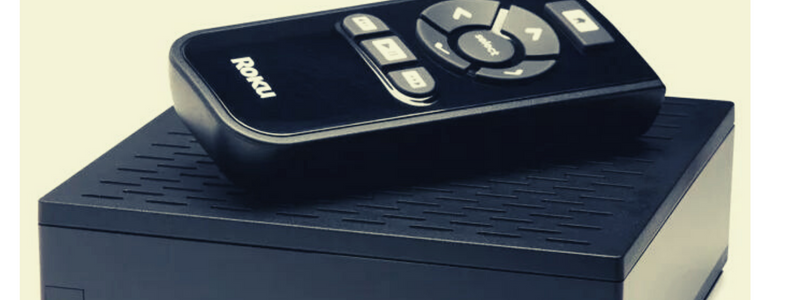
48. Google Glass
The much-hyped Google Glass never really took off in the market. This is not to say that product was underpowered or poorly styled; in contrast, the gadget-packed in a lot of top-notch components including but not limited to high-resolution display, camera, Wi-Fi, Bluetooth, voice commands, dual-core processor, gyroscope, accelerometer, 2GB RAM, flash memory, and a proximity sensor. All those are contained inside a tiny housing attached to the eyeglass frame. Although Google Glass is still far from perfect in its current configuration, it has set a new unexplored territory of wearable device inspired by science-fiction.
49. Fitbit (2009)
Mechanical pedometers have been in existence for a few centuries; Leonardo da Vinci envisioned them. The Fitbit Tracker, the company’s first device, was released in 2009 and it sparked the development of fitness trackers by major brands including Garmin. Unlike the refined versions of activity trackers launched many years after, the Fitbit Tracker was not meant to be worn on the wrist like a watch but was clipped onto clothing. It measured steps taken, distance walked, activity duration, as well as intensity, and floors climbed. Priced just under $100, Fitbit showed the world that the pedometer didn’t have to be expensive.
50. Nest Thermostat (2008)
Tony Fadell, the man famously known as the “godfather” of the iPod, left Apple in 2008 to create a thermostat technology startup. Leaving Apple in such a good year, especially from the prestigious position as the iPod Division’s Senior Vice President, would be considered a poor decision unless there was a better idea lurking around the corner; in this case, the idea was the Nest Learning Thermostat.
Released in 2011, the device became an instant phenomenon in the tech industry as more people were getting more accustomed to the notion of living in a smart home. Packed in a typical thermostat-like form factor, the Nest featured a color display and iOS-like software. It had enough processing power to learn heating and cooling patterns preferred by the homeowner, allowing the device to work automatically after a week or so. In 2014, Google purchased Nest Labs for no less than $3.2 billion. Google used Nest as a stepping stone to further promote other smart home devices.
51. DJI Phantom (2013)
The world has seen serious efforts in the development of UAVs (Unmanned Aerial Vehicles) since the very early stage of World War II. Development continues both for military and non-military purposes today. A lot of companies have introduced their own versions of drones, but it was the China-based DJI that successfully made a drone model likable by anyone, possibly also by those who previously despised it.
The Phantom, as the drone is called, was first released in 2013, designed primarily for amateur film recording. In 2016, DJI launched Phantom 4 packed with various improvements including a better propeller, subject-tracking system, obstacle avoidance, gyroscope, GPS, GLONASS, and more. Initially considered a dangerous weapon system, DJI’s Phantom has made children (and adults) love drones.
52. Yamaha Clavinova Digital Piano (1983)
A combination of compactness and modern features has always been a successful formula in consumer electronics devices such as cell phones, laptops, and even electric pianos. The Yamaha Clavinova Digital Piano made a prominent example of that. It remains one of the most popular Yamaha digital piano lines today. The original Clavinova YP-40 was designed to cater to the more casual players rather than serious music-technology enthusiasts. As a result, the overall aesthetic quality was pleasing without being too daunting for the average user, yet it still packed enough functions to serve as a decent synthesizer. As a matter of fact, the Yamaha YP-40 is now often regarded as the first true digital piano. Released in 1983, the YP-40 was a space-saving variant for households in the 1980s without the need for expensive tuning.

53. Segway
The most surprising thing about a Segway is not its self-balancing mechanism, but how it has become a metaphor and cultural symbol for the increasingly too-heavy-to-move-around population. The world is putting on weight; and nothing better to reflect that than the Segway. A subject of continuous hype and mockery, the Segway is often touted as a revolutionary means of transportation that will eventually make walking obsolete.
On the other end of the spectrum, people are wearing activity trackers just to measure how many steps they take on a daily basis. A similar gadget called the hoverboard offers more or less the same thing. While both the Segway and hoverboard have not changed the world by any means, at least they’ve made the world realize that sometimes the best way to do things is without using any gadget at all. Just because you can travel from the kitchen to the front porch without stretching a muscle, it does not always mean you should.
54. MakerBot Replicator
Neither the best nor the first consumer-grade 3D printer, the MakerBot Replicator brought the promise that such technology could be made less expensive than the market had suggested earlier. Available for just under $2,000, it was the first personal 3D printer for homes that were financially plausible. Children can now build their own action figures, startups have easier ways to present their innovative products to consumers as well as investors, and teachers are now able to show how impressive the 3D printer is to students.
55. Motorola StarTAC (1995)
The clamshell mobile phone may not be the most popular design now, but it remains an iconic style. When Motorola StarTAC hit the market in January 1996, no other phone was more portable. Many companies would copy or take inspiration from it, resulting in a wave of flip phones immediately after. However, it was once again Motorola came up with another hard-to-forget clamshell model called the RAZR.
56. Motorola RAZR (2003)
Anybody from the future will have a hard time admiring the Motorola RAZR assuming they read only the specifications. It had a 2.2-inch color LCD, Bluetooth, video playback, 4X digital zoom camera, and that’s about it, aside from its ability to make phone calls and SMS. The specification is lousy by today’s standards but was amazing for its time.
57. Sony AIBO ERS-110 (1999)
The first-generation model of the AIBO cost around $1,500, but it did have many things you would want from a pet and then some. It was subjectively cuter than an average beagle but definitely a whole lot smarter. The robotic pet learned from its environment and repeated interactions with owners displayed emotions and behaved exactly like a puppy. Later generations came with voice commands and a webcam too. Sales began on June 1st, 1999. People could buy one online, and the first batch sold out in just 20 minutes. Hardware and software have been improved over time, and it actually is still available today. Sony AIBO is a purebred robot that gets humanity closer to the Star Wars fantasy.
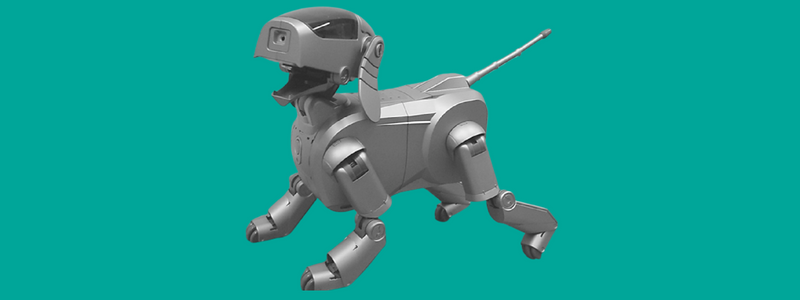
58. Diamond Multimedia RIO PMP300
About three years before the first-generation Apple iPod began to invade store shelves, the RIO PMP300 made by Diamond Multimedia had seen the light of day. As one of the first portable audio players and also the first to gain commercial success, the device played a major part in revolutionizing how the world consumes music. The iPod, however, crushed the competition as soon as it came along.
RELATED: Check out this list of successful Kickstarter campaigns!
59. M-Systems DiskOnKey (2000)
The first company to patent and market the flash drive is M-Systems. It was marketed as DiskOnChip in 1995 and later renamed DiskOnKey in 2000. IBM was the first to market the USB flash drive in North America, but all the flash drives were purchased from M-Systems and sold under IBM.
60. Texas Instruments Speak & Spell
The tape recorder was the most sophisticated device from which children could learn how to spell until the Texas Instruments Speak & Spell came to surface. Suddenly, a whole new generation of children enjoyed a more interesting and practical device with which they truly learned and played.
61. Handspring Treo 600 (2003)
A new era of phone-laptop hybrid began in 2003 with the release of Treo 600, developed by Handspring but sold under the Palm brand. Handspring was founded by the original inventors and founders of Palm Pilot in 1998. Despite the competitiveness, Handspring merged with Palm, Inc. in the same year. Small enough to fit in a pocket yet comfortable enough to house a QWERTY keyboard layout, the Treo 600 was the definitive IT gadget back then.
62. Zenith Space Command (1952)
The first remote designed specifically to control the television – Zenith Space Command – only had four buttons on it: a power button, a volume button, and two-channel buttons. Once any of the buttons were pressed, it emitted a high-frequency tone detected by the circuitry in the TV unit. Developed in 1956 by Robert Adler, the remote control enjoyed more than two decades of domination in American living rooms before the more sophisticated infrared-based remote came about.
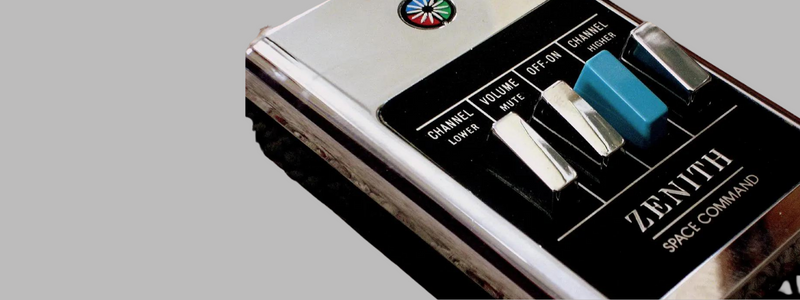
63. Hamilton Pulsar (1972)
Today’s wristwatch market, especially in the top-range segment, is all about the fancy mechanical manual winding pieces. Looking back several decades into the 1970s, the digital watch was something revolutionary and actually expensive. Hamilton Pulsar, launched in 1972, was available for a solid $2100; to be fair, the case was made of gold, but a stainless-steel version soon followed, and anybody could get it for a more reasonable $275. Roger Moore and Gerald Ford were fans.
64. Kodak Instamatic
The best thing about the Kodak Instamatic was its film-loading system. A cartridge housed the film and was designed to be easily replaceable. This allowed even the most amateur photographer to prevent the films from getting exposed to bright light or being misaligned. The camera also had a flashbulb that popped open. It was so popular that tens of millions of units were sold.
65. Microsoft IntelliMouse Explorer (1996)
An optical mouse has eliminated one of the most annoying drawbacks of using a computer: the accumulation of dirt in a trackball. The optical mouse was around before the IntelliMouse came into existence in 1996, but it was this peripheral that successfully brought the technology to users at large.
66. MITS Altair 8800 (1975)
Developed by MITS in 1974 and released to the market in January 1975, the Altair 8800 was the first commercially successful home computer. While it was more a gadget than a ready-to-use computer, it became a serious inspiration for people like Bill Gates and Paul Allen to create the BASIC programming language. As a matter of fact, the computer industry as a whole set on a march to come up with various peripherals and upgrades thanks to the Altair 8800.
67. Radio Shack TRS-80 Model 100
When people in the 1960s talked about portable computers, one thing they thought about was the 24-pound Osborne 1. The term “portable” started to have a new meaning in 1983 as Radio Shack visitors began to see something called the TRS-80 Model 100. Available in the range of $800, it was a very popular notebook from the get-go. Compared to Osborne 1, the new portable computer was a featherweight at just 4.25 pounds. It came with some pre-installed applications including word-processing. There was even a built-in modem with a mind-boggling 300 bps maximum speed.
68. Sony Betamax (1975)
Soon after the Betamax became available in 1975, Sony had to deal with a legal battle under the accusation of encouraging video piracy. Thankfully for Sony and everybody else, the U.S. Supreme Court determined that the use of the technology (time-shifting) had more benefits than potential harms. While Sony Betamax helped people enjoy video entertainment for many years, it could not compete with the more affordable VHS devices made by JVC. Believe it or not, Betamax cassettes were still around until just two years ago.
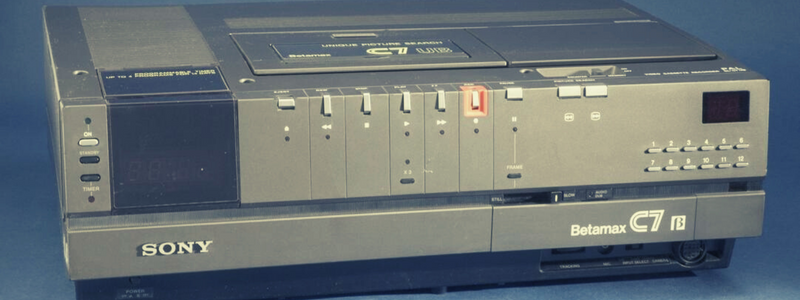
69. Sanyo SCP-5300
The first phone equipped with a camera was made by Sharp, but Sanyo was the first company to introduce the technology to the United States with its SCP-5300. It was a clamshell mobile phone featuring a camera that captured 640 x 480-pixel resolution images. It did not offer any kind of connectivity to transfer the images to a computer; you could get the images off the phone by sending them to another phone, email address, or upload to Sprint PCS’ website.
70. iRobot Roomba Intelligent Floorvac
Most vacuum cleaners are listed under the home appliance category, but you can actually call Roomba a robot. With more than two million units sold, Roomba stands as the first popular and most successful home-grade robot. It sucks up dust from the floor and tight corners while avoiding obstacles in its way. Roomba can also return to its docking station with a press of a button.
71. Franklin Rolodex Electronics REX PC Companion
Running an operating system created by Starfish Software and boasting hardware made by Citizens Watch Co., the REX PC Companion was nothing more than a PC card. It had an anti-glare LCD screen and TrueSynch technology that allowed the users to import personal data from computer programs such as a Lotus Organizer and Microsoft Outlook. Simply insert it into a Type II notebook slot and it’s ready to use. It was the anytime-anywhere electronic organizer.
72. Lego Mindstorms Robotics Invention System 1.0
The usual Lego blocks are always interesting for children (and adults), but it will be much more exciting if the assembled figures can do some actions as well. Lego Mindstorms Robotics Invention System became the origin of the technology. It was an interactive toy to which players could upload programs or commands, so it would function on its own. The Mindstorms brand is still pretty much alive and far more developed today.
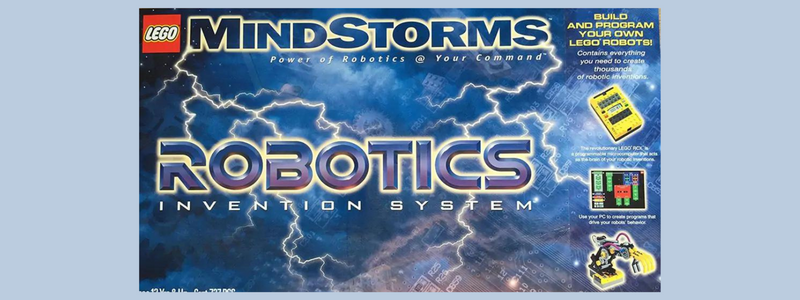
73. Iomega Zip Drive (1994)
The average computer user didn’t really have any idea of data backup until the Zip Drive by Iomega hit the market in 1994. The earliest model of this removable floppy disk storage system had a capacity of 100MB, but it was later increased to finally reach 750MB. Of course, the external storage device could not compete with a more versatile rewriteable CD and DVD, resulting in a decline of popularity in the early 2000s.
74. Magnavox Magnavision Model 8000 DiscoVision Videodisc Player (1978)
Laserdisc preceded the CD-ROM and DVD, and the Magnavox Magnavision Model 8000 DiscoVision by Philips released in 1978 was the first consumer player for the format. Putting aside its astronomical failure rate and $749 asking price, the device is a reminder of how easy it is to flop.
75. Milton Bradley Simon (1970s)
Subtly trying to capitalize on the disco era of the 1970s, Milton Bradley Simon has come out outlasting the trend big time. The gadget, now most commonly referred to simply as Simon, was just a memory game with which players tried to remember a light sequence generated by the toy. Many versions, both knockoffs of the original or the official version released by Hasbro, are still everywhere to be found today. It is fun, frustrating, and iconic, all packaged in one simple toy.
76. Play, Inc. Snappy Video Snapshot (1995)
Before the age of selfies and Skype, the first mainstream video input for Windows was the Snappy Video Snapshot by Play, Inc. It attaches to a computer’s parallel port and captured/recorded photos and videos. Released in 1995, more than 25 million units were sold in just one year. Today we’re spoiled with composite video inputs, TV tuners, and USB webcams. In the absence of those convenient technologies long ago, the Snappy Video Snapshot was there to bring a little bit more of playfulness to home computing.
77. Connectix QuickCam (1994)
The Connectix QuickCam appeared in 1994. The QuickCam was available for $100 – it recorded video at 15 frames per second and took grayscale photos at a 320×240-pixel resolution. This was the first webcam, and newer versions are available in a much more refined shape.
78. Sony Mavica MVC-FD5 (1997)
One thing that made the Sony Mavica MVC-FD5 stand out from the crowd was its photo storage system. Instead of using film, the camera utilized the ubiquitous (at that time) 3.5-inch floppy disk. It was the first camera to come with such a feature, allowing users to transfer photographs to the computer more easily. It also meant that users could keep on taking pictures as long as they carried more floppy disks (and batteries). Released in 1997, the FD5 was rather ugly and bulky just like many early digital cameras available in the same time period. Its photography functions, however, were quite respectable back then with a 0.3 MP sensor and 2.5-inch LCD.
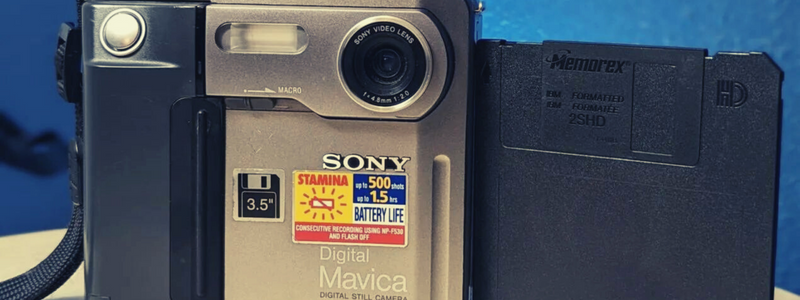
79. LearJet Stereo 8 (1966)
First appearing in Ford vehicles and often housed in an ugly bracket in the dashboard, the Learjet Stereo 8 had its share of glory days in the 1960s. It was so good that Ford only made it available as an option for three high-selling 1966 models including the Mustang, Thunderbird, and the high-end top-of-the-world Lincoln. Car audio was alright, but the songs played were selected by whoever hosted the radio program. With an 8-track, you were no longer at the mercy of a radio playlist. Unfortunately for the Stereo 8, it did not take long until more convenient technologies came about. Cassette tapes along with the more compact player soon took over the market, playing a major role in the demise of its predecessor.
80. IBM Simon Personal Communicator (1994)
Not to be confused with the Simon toy, the IBM Simon was truly the first smartphone. Combining popular features of a mobile phone and a PDA, IBM Simon came with the right blend of popular gadgets including a phone, pager, fax machine, address book, wireless e-mail, calendar, and calculator. Released in 1994, it would take about another year until people actually began to use the term “smartphone” to refer to more or less the same thing. Made available for around $900, it was built to be an all-in-one professional communication device. IBM Simon was discontinued within just six months after its initial release, but around 50,000 units were sold nonetheless. It has been more than 25 years since the first smartphone came into existence and the industry has become astronomically much more sophisticated now.
81. Motorola HT-220 (1969)
Another major success for Motorola, the HT-220 was a far improved version of the first portable two-way radio introduced during World War II. Instead of using discrete transistors, Motorola came up with the idea of utilizing integrated circuitries to make the device lighter and more compact; a single two-radio used during the war weighed around 35-pounds, but the HT-220 was just 22-ounce. Released in 1969, the HT-220 was a favorite of the Secret Service. Although it has fallen out of favor, there is still a considerable number of dedicated followers somewhere.
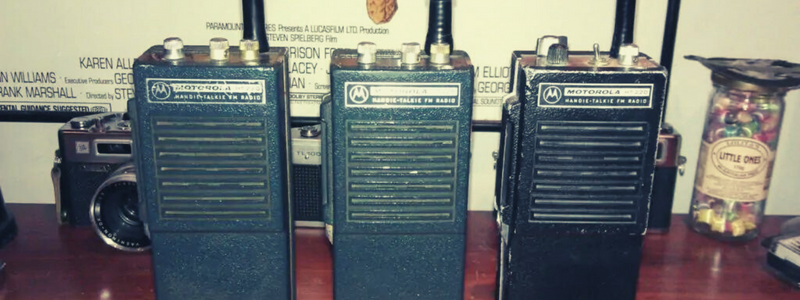
82. Timex Sinclair 1000 (1982)
Launched in 1982 and made available for just under $100 ($99.95), the Timex Sinclair 1000 was the first true portable and affordable home computer. It was also the cheapest home computer in the U.S. when it first hit store shelves. According to Timex, at least 600,000 units were sold by early 1983. Despite the fact that it was barely usable for just about any task, the platform was a real commercial success. It came with 1KB of RAM and ran on the BASIC programming language. Competing with Apple, Commodore, and Atari, Timex Sinclair managed to penetrate the market, albeit for a short while; for that, the home portable computer is worth remembering.
83. Sharp Wizards OZ-7000 (1989)
It was neither PalmPilot nor Apple Newton MessagePad that deserved the credit as the first electronic organizer, but the Wizard OZ-7000 by Sharp was released to the market in 1989. It stood more than 16cm tall and 9cm wide, so the organizer was not quite pocket-friendly. The good thing was that it came with a lot of useful features such as a calendar, calculator, world clock, alarms, and memo; the kinds of features that later became common in future PDAs. In the European market, it was known as the IQ-7000.
84. Jakks Pacific TV Games (2004)
The joystick has always been and will remain a perfect symbol for video gaming on multiple platforms including a stand-alone console and even a computer. In 2004, the world of gamers rejoiced when Jakks Pacific released an all-in-one joystick console platform that came pre-installed with a good selection of popular games including Pong and Breakout. The best thing was that it ran as a plug-n-play device; simply connect it to a TV unit (via standard input) and start.
85. Poqet PC Model (1989)
Comparable in size to a typical videotape, the pricey Poqet PC was a portable IBM-compatible computer introduced in 1989. It was one of the first subnotebook computers on the market. The whole device was powered by two AA batteries; thanks to its smart power-saving feature, however, it could run for up to 100 hours. Another notable feature was the instant-on technology, allowing the device to immediately startup with the press of a button. It had some off-the-shelf programs like a text editor, calculator, address book, and schedule with alarms. You could even plug a modem and floppy drive into it.
86. Clockwork Radio (1992)
A radio running on gears and wheels instead of an electric power source would be reliable, and reliability was what the Clockwork Radio gave. Instead of using batteries, the radio relied on an old-fashioned winding mechanism to receive power. A generator inside was run by a mainspring so in some ways it resembled the mechanism of a manual-winding watch. An internal battery could be charged with a generator as an alternative. Trevor Baylis, the inventor, patented the design in 1992. He designed it for people in poor countries with no access to batteries.

87. Broxodent Electric Toothbrush (1954)
Released around the same time as the General Electric Automatic Toothbrush, the Broxodent Electric Toothbrush was much more reliable than General Electrics. Instead of running on a NiCad battery that suffered from memory loss over time, which eventually forced users to discard the unit, the Broxodent must be plugged directly into a power outlet. Designed by Dr. Philippe-Guy Woog and intended for people with disabilities, the electric toothbrush gained commercial success not as an assistive device but as a convenient gadget. It was manufactured in Switzerland initially starting in 1954, but then introduced to the U.S. market by E. R. Squibb and Sons Pharmaceuticals five years later.
88. Black & Decker Cordless Electric Drill (1916)
In case you haven’t noticed, many cordless drills have little resemblance to a revolver. It remains more or less the same design as introduced in 1916 by Black & Decker with its electric power drill. This was the first of its kind, and it took more than four and a half decades for the company to release a cordless version powered by a Nickel-Cadmium battery. The cordless electric drill (as well as many other power tools) changed the world by allowing the average person to do some real woodworking like a pro. The Do-It-Yourself movement has changed a lot since.
89. Electric Razor (1928)
In 1928, a revolution started in the men’s grooming world thanks to Jacob Schick. In just three years following his invention of the electric razor, people could buy the product for $25 each (more than $427 in today’s money). By 1937, more than one and a half million units were in consumers’ hands. Philips Laboratories and Remington later improved the design by utilizing revolving heads. Steel blades and cumbersome sharpening fell out of favor as a result.
90. PSion MC 400 (1980s)
Compared to most portable computers in the late 1980s, the Psion MC 400 was ahead of its time. It was small, light, and actually well-equipped to do some serious computing. Although it couldn’t defeat the full-sized personal home computer, the computing power was not bad at all. It ran on the EPOC operating system, had a good keyboard, came with a touchpad, and offered a removable memory. There were slots for a fax and modem as well. Lack of compatibility with PCs, unfortunately, meant slow sales. Released in 1989, the Psion quit the market 12 years later. The EPOC eventually became the basis for Nokia’s Symbian OS.
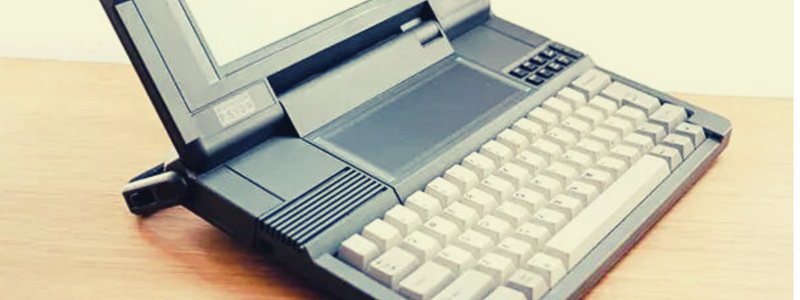
91. Leatherman (1983)
Everyone knows that the Victorinox Swiss Army knives preceded the Leatherman multi-tool by more than nine decades. The latter deserves a mention for the fact that it managed to challenge the former’s 90 years of market domination in the same product category. As a bonus, the Leatherman is as good in terms of quality, versatility, and portability. Released in 1983, the original Leatherman had basic tools including pliers, cutters, and screwdrivers.
92. SanDisk MicroSD Format (2005)
SanDisk unveiled the MicroSD format in 2005. The company offered a range of capacities from 32MB to 128MB. It didn’t take long for the world to capitalize on the invention, leading the company to compete with others by offering a humongous storage capacity of up to 128GB in 2011. Nearly all smartphones, laptops, cameras, and computers of today can read the format.
93. Bluetooth technology (2000)
Some say that the ubiquitous Bluetooth headset only looks good on a person in BMW M3 wearing a polo shirt driving to a golf course, but it did not stop the gadget from becoming popular immediately after its introduction in 2000. Several major names developed the technology together including Intel, Nokia, and Ericsson. They tried to use different names including MC-Link, Business-RF, and Low Power RF. It was Intel who eventually proposed the term “Bluetooth” as the official name for the SIG (Special Interest Group) involved in the development.
94. Samsung Uproar (2000)
Equipped with a jaw-dropping memory capacity of 64MB, the Samsung Uproar proudly came with MP3 audio playback. Released in 2000, it was the first mobile phone to bring the function. The phone also had internet connectivity and personal data management. Sprint asked for $400 each and the device became the mobile phone of choice at that time.
95. Waring blender (1937)
The blender was originally invented in 1922 by Stephen Poplawski. However, the invention is not often linked to his name, but rather Fred Waring who provided financial backing in 1936 to Frederick Osius who developed a similar invention. Frederick used the device to puree raw vegetables needed for his prescribed diet due to an ulcer. The Waring blender was introduced to the market in 1937 at a retail price of $29.75 and by 1954 a million of these gadgets were sold.
96. Magellan NAV 1000 (1983)
Before TomTom came up with the GPS-based car navigation system, Magellan took the first step to introduce the technology for public use. Magellan introduced the NAV 1000 six years after Ronald Reagan had issued an order in 1983 for the GPS to be available also for civilians rather than exclusively for the military.
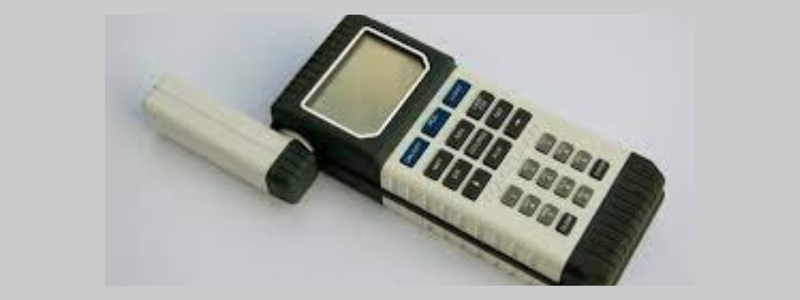
97. Power Strip (1972)
Frank Bannigan would have been a millionaire if he had patented his invention of the power strip in 1972. Major manufacturers all around the world copied the idea and came up with their own versions. He originally called it a power board.
98. Dirt Devil Hand Vac (1984)
The home vacuum cleaner has been around since the 1930s, but the Dirt Devil Hand Vac – specifically the model released in 1984 – turned out to be one of the bestselling models with more than 23 million units sold. It was small and easy to use; anybody could use it while sitting down and watching TV to clean up spilled popcorn and chips.
99. Archos Gmini 400 (2004)
Before Steve Jobs had the chance to introduce the video iPod – reluctance in development was mainly based on the assumption that people wouldn’t want to watch videos on the small screen – the Gmini 400 made by Archos took the opportunity to get a head start. Equipped with the minuscule 2.2-inch screen, buyers did not give a fuss about its video playback capability and focused on another function: listening to music. So, Steve Jobs was right all along, partly. The Archos was an early adopter of digital portable audio music playback, but it lacked the means to purchase music on-board just like what the iPod gave with iTunes, so it failed but the world remembers.
100. Canon EOS 5D Mark II (2008)
Far from being the first digital camera, the Canon EOS 5D Mark II is nonetheless a world-changing innovation at least in photography. The camera introduced full HD 1080p video recording capability – an unprecedented function when it was released in 2008. Its full-frame sensor lured even professional filmmakers to switch from their conventional much more expensive interchangeable lens cameras. It was the first digital camera used to take the official U.S. presidential portrait; not much of an accomplishment, but worth mentioning nonetheless.
Final thoughts
Have you made it through this entire list? I know, it was quite exhaustive, but you can use this as a reference. Maybe one day your gadget will make it onto this list too! And if you’re looking to design a new gadget or product, we at Cad Crowd would love to help. We have freelancers who can assist with your CAD design and make high-quality 3D models for you. Check us out!
